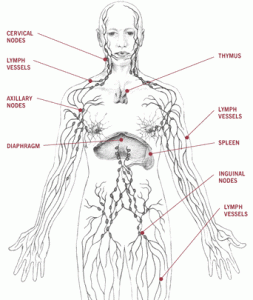here’s Biology Form 5 chapter 1 Transport 🙂 anything problem you could comment me 🙂
FORMATION OF THE INTERSTITIAL FLUID
- When blood flows from the arteries into the capillaries, there is higher hydrostatic pressure at the arterial end of the capillaries.
- Some fluid forces out due to the high pressure through capillaries wall into the intercellular spaces.
- When the fluid out, the fluid called interstitial fluid or tissue fluid.
- This fluid is similar to blood plasma but it does not have erythrocytes , platelets and large protein molecules.
IMPORTANCE OF THE INTERSTITIAL FLUID
- It bathes the cells
- Supply the cells requirements
- Oxygen & nutrients diffuse from blood through the interstitial fluid and cells
- Excretory products such as carbon dioxide and urea diffuse out
- The internal environment is kept within the range by homeostatic processes.
FATE OF THE INTERSTITIAL FLUID
- 90% of the fluid flows back to the venous where the hydrostatic pressure is low.
- 10% enters the lymphatic capillaries and called lymph
- If the excess fluid unable to return back to the blood capillaries, it will cause tissue swelling and this condition called oedema.
STRUCTURE OF THE LYMPHATIC SYSTEM
- Lymph is the colourless fluid in the lymphatic vessel.
- it contain a higher number of lymphocytes than blood.
- it also travel through the lymphatic vessels by the contraction of the surrounding skeletal muscle.
- Flows in one direction, one end of the vessel is closed and back flow is prevented by valves present in the larger vessel.
- the center for lymphatic system named thoracic duct ; the largest lymphatic vessel in the body
- it carries lymph to the left subclavian vein back to the bloodstream
- the right lymphatic duct transport lymph from the right side of the head and chest into the right subclavian vein.
- Lymph node mainly found at the neck, armpits and groin.
ROLE OF THE LYMPHATIC SYSTEM
- Collect interstitial fluid and returns it to the circulatory system.
- Lacteal; lymphatic capillaries in the villi of the ileum absorbs fats and fat-soluble vitamins hence transport them to the blood circulatory system
- Lymph nodes filter out bacteria & other foreign particles
- Lymphocytes produce antibodies which aid in the destruction of pathogens and neutralization of toxin



[…] of lymph nodes and the lymphatic system in the bodyHow to keep your lymphatic system healthlyLymphatic Systemfunction getTubePressBaseUrl(){return […]